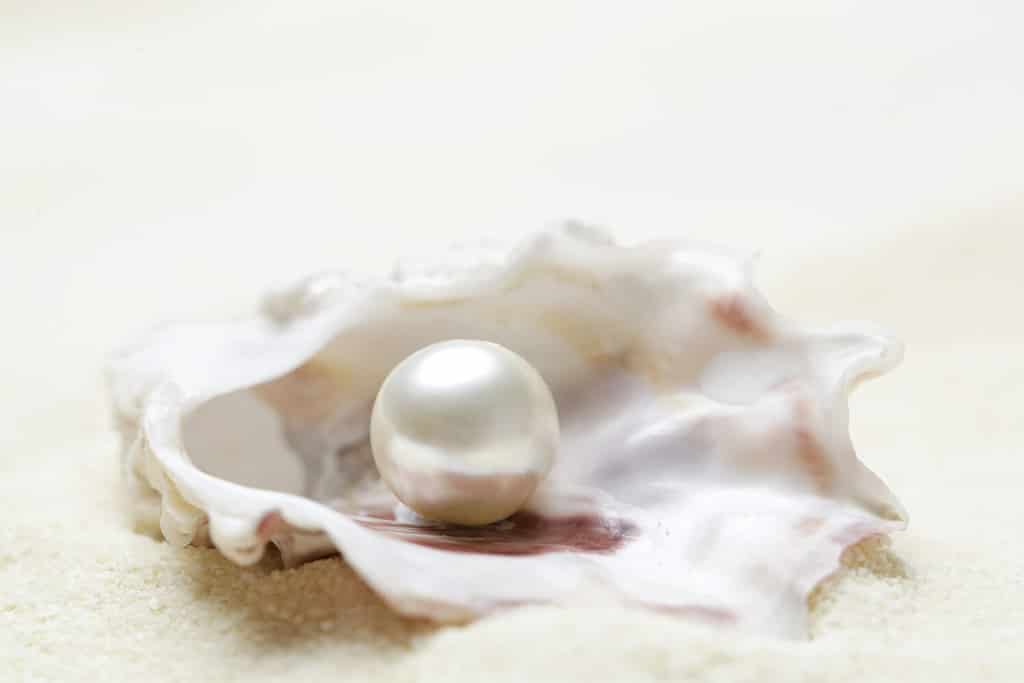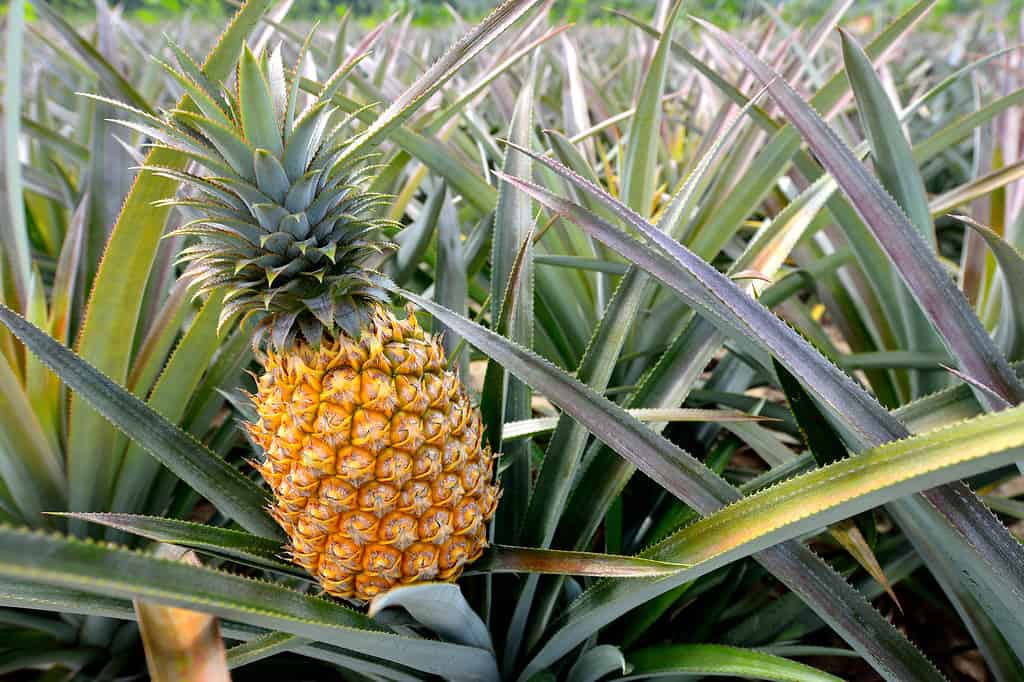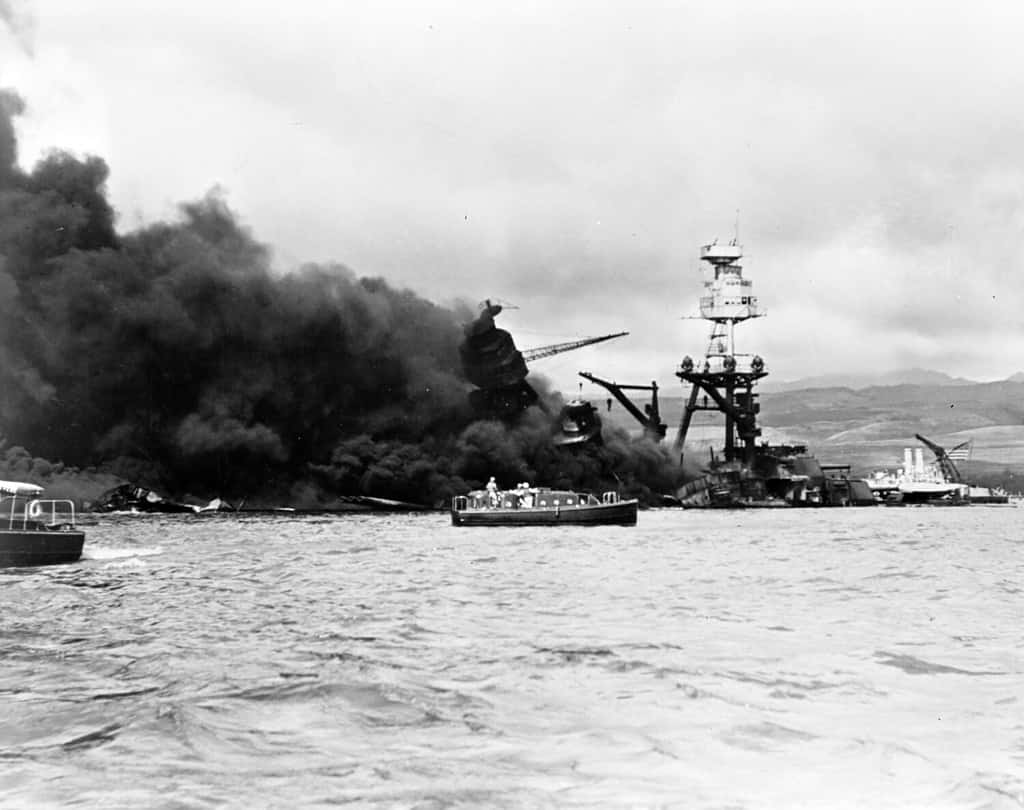Pearl Harbor is the largest natural harbor in the state of Hawaii. It is located on the south coast of Oahu just west of Honolulu, the capital. Indigenous Hawaiians called it Pu’uloa (“long hill”) or Wai Momi (“water of pearl”) because it was an abundant source of pearl oysters. Local legend claims the shark goddess Kahiʻuka protected the area and defended pearl divers from man-eating sharks. In modern times, the name “Pearl Harbor” has become synonymous with the surprise Japanese air and naval attack in 1941 that brought the United States violently into World War II. However, the harbor has wildlife and timeless natural beauty that will outlive its tragic history.

Pearl Harbor got its name because it was historically a prolific source of pearls.
©triocean/Shutterstock.com
Natural Dimensions of Pearl Harbor
Pearl Harbor is a natural lagoon that serves as a major seaport for the United States Navy in the center of the Pacific Ocean. The cities of Ewa, Aipahu, Pearl City, Aiea, and Honolulu surround it. It includes 10 square miles of navigable water and covers a land area of 10,000 acres. It has anchorages for hundreds of ships. The harbor connects with the Pacific Ocean via Pearl Harbor Entrance. The whole harbor is quite shallow, with an average depth of 45 feet and a maximum depth of 59 feet. As a result, some of the larger ships that sank there during World War II rested on the bottom with their decks still above water.

Pearl Harbor is a shallow natural lagoon that is now a major seaport.
©PH1 Javner, U.S. Navy, Public domain, via Wikimedia Commons – License
Wildlife of Pearl Harbor
In 1972 the Pearl Harbor National Wildlife Refuge began working to protect wildlife threatened by the heavy development, air, and sea traffic in and around Pearl Harbor. It includes two freshwater wetland areas with nesting islands, vegetation, and mudflats used by waterbirds. In another area, it has two brackish ponds that preserve the endangered ae’o, a kind of black-winged stilt. Saltwater pools filled by cracks in the limestone are home to the ʻōpaeʻula, or Hawaiian shrimp. Some of the native coastal plants in the protected area are the endangered ‘akoko and the ‘ewa hinahina. Other native plants there are the maiapilo, which blooms fragrantly at night, the hinahina, and the naio.

The maiapilo is a fragrant night-blooming plant found in the Pearl Harbor National Wildlife Refuge.
©Vipul1989/Shutterstock.com
History of Pearl Harbor
Prehistory and European Contact
Polynesian settlers first inhabited the Hawaiian Islands between AD 1000-1200, followed by waves of settlement from various Pacific islands. The first known European contact was in 1778 when British explorer James Cook arrived, although some scholars believe the Spanish may have discovered it centuries earlier. In the following century, whalers, missionaries, and plantation developers arrived while the native Hawaiian population declined sharply due to the introduction of diseases like influenza, smallpox, and measles.
American Control
Hawaii was a monarchy that was friendly to the United States. However, due to commercial interests and expansionist sentiment in the United States, a coalition of American businessmen overthrew the Hawaiian monarchy in 1893. They proclaimed a republic which the United States annexed in 1898. Hawaii did not become a state until 1959. This long delay was in part because local plantation owners benefited from remaining at territorial status, which allowed them to import cheap labor from other countries without being subject to labor laws required of states.
Improvements to Pearl Harbor
The United States gained access to territory around Pearl Harbor in an 1875 treaty and gained exclusive rights to the whole harbor in 1887. Until the early 20th century, large ships could not use the harbor and its entrance because they were too shallow. In 1902, the U.S. began dredging operations to widen and deepen the channel connecting the bay to the surrounding ocean. After completion of the dredging operation, large vessels could move through a 600-foot-wide and 35-foot-deep passage. The United States established a naval base in 1908 that would be strategically important in the future conflicts. Pearl Harbor today is still an active U.S. military installation.

Plantation owners played a significant role in the timeline of Hawaii’s path to statehood.
©9comeback/Shutterstock.com
Pearl Harbor in World War II
World War II officially began in 1939 but the United States remained “neutral” in the first years of the war, while doing all it could to support and supply the Allied powers against Nazi Germany and Imperial Japan. Japanese strategists believed that war with the United States was inevitable and decided to strike first to gain the advantage. On December 7, 1941, they were able to achieve complete surprise with an aerial attack of 353 aircraft launched from six aircraft carriers. The United States lost four battleships, three cruisers, three destroyers, an anti-aircraft training ship, and a minelayer, as well as 180 U.S. aircraft. American casualties included 2,403 dead and 1,178 wounded. As a result of the attack, the United States declared war on Japan the following day. The Tokyo Trials judged the attack a war crime because it happened without warning and without a declaration of war.

The attack on Pearl Harbor sank four U.S. battleships, including the USS Arizona.
©Everett Collection/Shutterstock.com
Visiting Pearl Harbor
Entry to the Pearl Harbor National Memorial is free, but there is a fee for parking. Here are some of the attractions and exhibits:
- USS Arizona Memorial: Take a boat ride to a concrete-and-steel structure where you can see the hull of this sunken battleship, where 1,100 U.S. servicemen lost their lives. Reservations should be made in advance at recreation.gov as the site attracts 3,000 visitors a day.
- USS Bowfin Submarine Museum & Park: Board this World War II-era submarine to see what life was like for sailors. Learn more at indoor and outdoor exhibits at the nearby Pacific Submarine Museum.
- USS Missouri: Take a guided or self-guided tour of one of America’s most famous and celebrated battleships.
- Pearl Harbor Aviation Museum: View the battle-damaged air field and control tower of Ford island as well as 1940s hangars with a collection of aircraft from the era.

The Pearl Harbor Historic Site is worth visiting.
©iStock.com/bennymarty
Whether you’re a military history fan, learning about relatives who fought in World War II, or exploring diverse wildlife on this beautiful island, there’s no shortage of sites to soak in at Pearl Harbor.
The photo featured at the top of this post is © PH1 Javner, U.S. Navy, Public domain, via Wikimedia Commons – License / Original
Thank you for reading! Have some feedback for us? Contact the AZ Animals editorial team.







